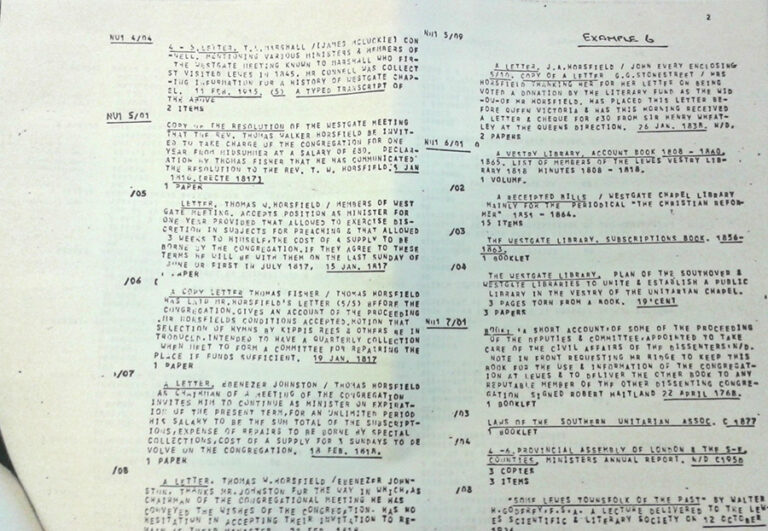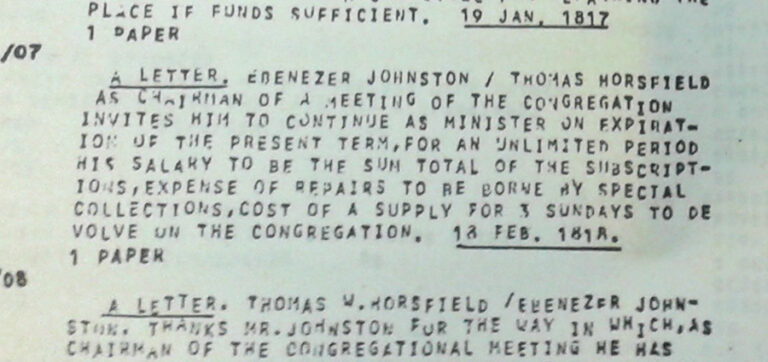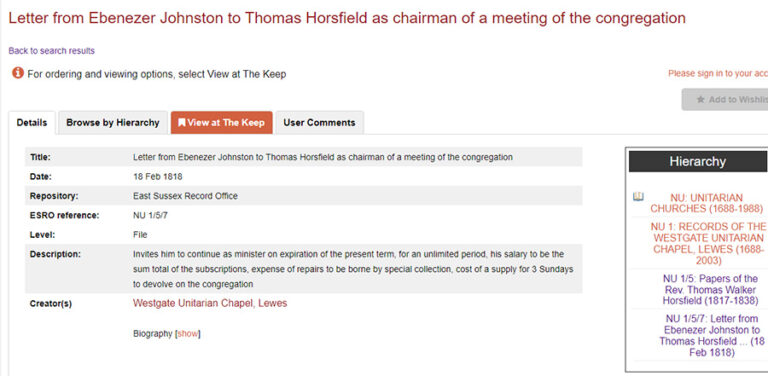Many of us work in many different ways to keep a sense of the past alive. To prompt reflection on the means by which this has been accomplished through the years, the International Conference on the History of Records and Archives (ICHORA) has been held regularly since 2003.[ref]15 Years On: iCHORA (International Conference on the History of Records and Archives) Returns (May 28-30, 2018) – Archival History News.[/ref] The conference brings together all those interested in the history of recordkeeping to uncover the stories of how records of the past have been constructed and maintained over time, however distant or recent.
Next year ICHORA will be hosted virtually by The National Archives and the Forum for Archives and Records Management Education and Research (FARMER). A call for participation is now open and it seeks, among other things, to encourage the writing of postcards from the past. We want to hear about the people, places, events or objects that you feel should feature in the history of recordkeeping. And more to the point, we want to hear about why you feel that way and what it is that they mean to you personally.
Is there someone who you think of as a recordkeeping hero or heroine? Is there a place where records have been stored for so many centuries that you can feel their presence in the very walls? Are there events that have changed the way you think about recordkeeping? Or objects that seem to take on a special symbolism in linking you back to past generations of recordkeepers? These are the stories we want to hear and here, to get you started, is one of mine.
It is generally accepted that the digital revolution has been the catalyst for a similar revolution in recordkeeping. The ways and means by which we store and access information on a daily basis today are completely different to the ways and means by which we did so back in the early 1990s, when I first started working in archives. My subsequent career has, in large part, been shaped by the need to adapt to this shift, and sometimes it has felt like a constant battle to keep up, to re-educate myself and to get to grips with the latest advances in technology. At times I have felt dispirited in this fight, which is why this fading photocopy holds such personal significance for me. It may not be much to look at, but piece together the whole story and you will find that it represents evidence of possibly the first ‘successful production of an archive catalogue by computer’ to take place in England.[ref]Newton, Carl. ‘Notes and news.’ Journal of the Society of Archivists 4, no.3 (1971): 234-238. doi: 10.1080/00379817909514142.[/ref]

This claim to primacy was made by Carl Newton of East Sussex Record Office in 1971 in the pages of the Journal of the Society of Archivists. This sample however forms part of material, which seems to have been assembled in relation to a meeting held at the University of Sussex in the summer of 1974. This meeting had been organised by the International Council on Archives’ Working Party on the Implications of Automatic Data Processing for Archival Management. That the international community came to the UK to learn about the system that had been put in place at East Sussex Record Office offers more evidence of its contemporary significance.
A paper delivered at that meeting outlines the background to what was known as the ARCAIC system (archives and records cataloguing and indexing by computer). It relates how a proposal to set up the system had been approved with a budget of £1,500 in November 1970. Work had started immediately and by June 1971, ‘949 documents had been processed’.[ref]Chesterman, R G A ‘The Operational Development of ARCAIC in the East Sussex Record Office, 1970-1974.’ In Proceedings of an International Seminar on Data Processing in Archives, edited by Lionel Bell and Michael Roper, 176-203. London: HMSO, 1975: 179.[/ref] It was not all plain sailing however, and problems were encountered at the end of 1973 that led in part to a change of direction in using the system developed for more modern material as part of the office’s developing records management programme.[ref]Ibid., 181.[/ref] By 1980, Michael Cook, writing in his volume Archives and the Computer, described the ARCAIC system in detail but also stated that it was no longer in use.[ref]Cook, Michael. Archives and the Computer, 1st ed. London: Butterworths, 1980: 100.[/ref] He went on to make the following pronouncement, with which I am in complete agreement:
Credit must be given to the pioneering efforts of the East Sussex Record Office and to the County Archivist at the time, S C Newton. It is the lot of the pioneer to suffer the trials of experimental work only to find that others have benefited from his mistakes.[ref]Ibid.[/ref]
Technology has fundamentally changed both the environment in which recordkeeping must be undertaken and also the ways in which it can be undertaken. The pioneering work at East Sussex was superseded as the next generation of personal computing arrived in the 1980s. Nonetheless, its pioneering spirit can continue to inspire us today.
Today, The National Archives is seeking to reimagine what it means for an archive to be digital by instinct and design. It is conducting its own research, such as the recent AI for Digital Selection project. Tracing a line back from this experimentation to that done by earlier generations of recordkeeping practitioners gives me the confidence to face down future technological change. In the efforts of Carl Newton, East Sussex Record Office and numerous other individuals and institutions since, I find bedrock, a solid ground on which to stand and from which to build. Facing down technological change, I also find great comfort in the fact that the descriptions recorded on this grainy list have themselves survived through the generations, to be found today through technological means that could barely be conceived of back in the early 1970s.


This is why this faded sample list is the object and the image I choose to put on my postcard from the past. I hope that many of you will feel inspired to submit your own and I very much look forward to reading them.